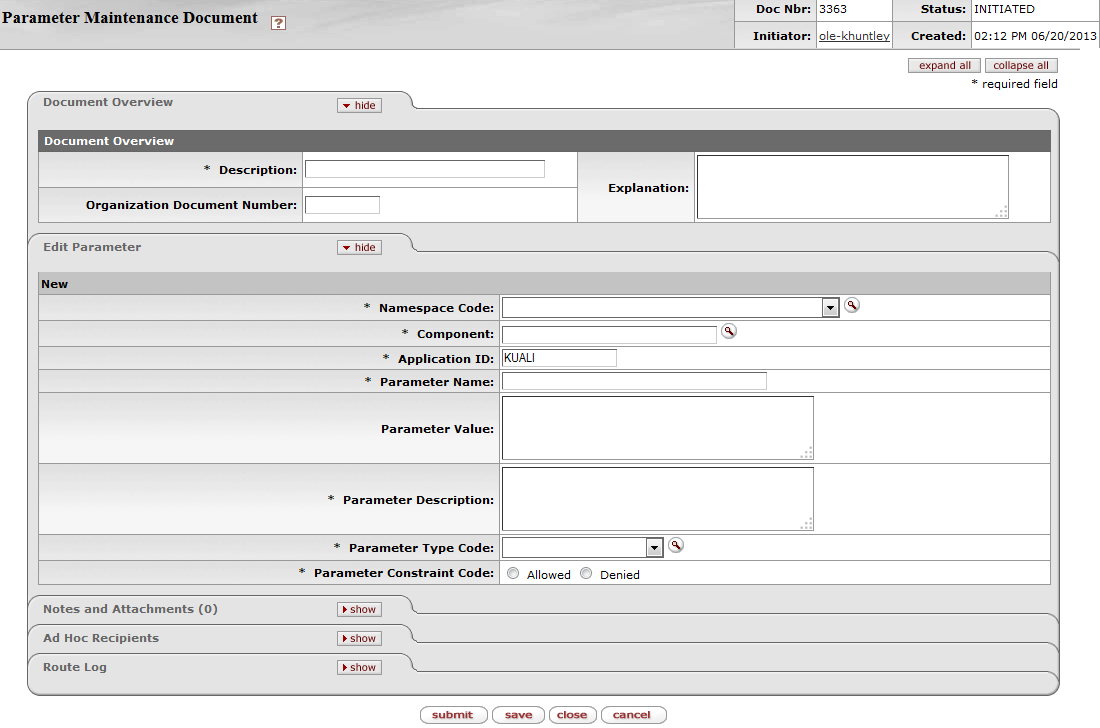 >
>  >
>  >
>  >
>  >
> 
The Parameter document is used to define parameters and business rules in OLE. A specific value of a parameter can vary based on what the parameter is used to define. Some parameters create business rules. These rules create restrictions and enforce valid values and combinations on various document types or batch processes. Other parameters simply define institution-specific values not defined elsewhere in OLE. The value may, for example, be text that OLE is to display in a given location or it may be a simple yes or no value to turn an option on or off.
Only members of the KR-SYS Technical Administrator or OLE-SYS Manager role can create or edit Parameter documents.
 |
The Parameter document includes the Edit Parameter tab. This tab is where you define the modules, type, rules, and description of the parameters.
Edit Parameter tab definition
|
Title |
Description |
|
Namespace Code |
Required. Select the appropriate Namespace code for the parameter from the Namespace Code list or search for it from the lookup. |
|
Component |
Required. Enter the parameter component
code or search for it from the Parameter Component lookup |
|
Application ID |
Required. Enter the application namespace to identify the application to which this parameter applies. Note that the same parameter can have different values for different applications. |
|
Parameter Name |
Required. Enter the name of the parameter being defined. |
|
Parameter Value |
Required. Enter the value for the parameter. The nature of a given parameter determines what form the parameter value should take. In some cases it is text for an OLE user to view or it could be a value such as an account number or an object code. In cases where multiple values are allowed they should be separated by a semi-colon. Consult with technical resources if you are unsure what format a specific parameter value should take. |
|
Parameter Description |
Required. Describe the purpose and usage of the parameter. The description is used for a documentation purpose. |
|
Parameter Type Code |
Required. Select the parameter type
code from the Parameter
Type list or search for it from the lookup Default types include: System Configuration: Used to establish institution values not specific to validation. Document Validation: Used to establish business rules for documents. |
|
Parameter Constraint Code |
Required. Select Allowed if the parameter is to allow the defined parameter value within OLE application. Select Denied if the parameter is to deny the defined parameter value within OLE application. Consult with technical resources if you are unsure of the appropriate constraint code for a given parameter. |



